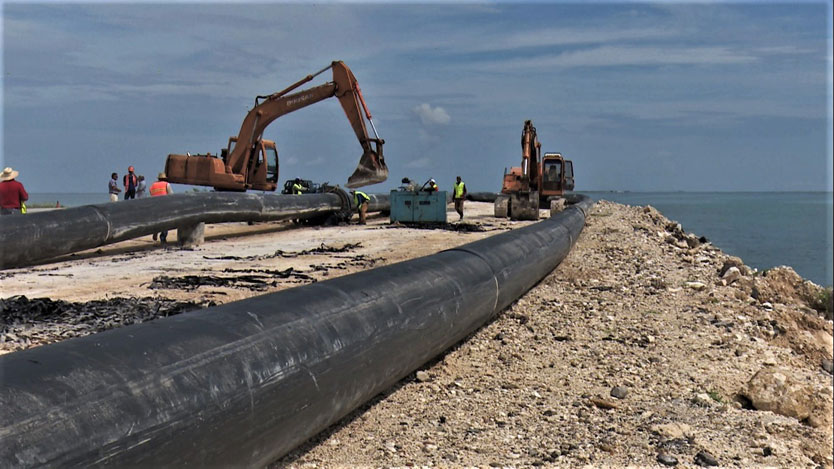
The phrase that Humberto de la Caridad Hernández Suárez did not say last year, while offering information on the construction of a drinking water pipeline that will connect Turiguanó with Cayo Coco, it is said now, with full responsibility. The "task" is difficult, but they have to continue planting tubes without looking ahead.
The director of the Cuito Cuanavale Base Business Unit of the Hydraulic Works Maintenance and Rehabilitation Company uses the allegory of the words of Fidel Castro, visible on the sign located at the beginning of the causeway, and adds: “there are no hours here.” Clearly, that path over the sea continues to generate epics. Of the 188 million pesos at which the driver is valued, 105 million have been executed to date, and the figures speak for themselves of the magnitude.
Also of priority, as insisted by Edwin González González, provincial delegate of the National Institute of Hydraulic Resources (INRH) in Ciego de Ávila. The tourist development of Jardines del Rey depends on the quality with which work is carried out today, on the horizon of which is doubling the current 10,000 rooms in operation.
The Turiguanó-La Bandera conductor, 27.4 kilometers (km) long, will replace the one that serves the keys to double the flow. High-density polyethylene instead of fiberglass; the modern replacing the obsolete. However, it is not only about the material from which the tubes are made, but also about their diameter. By increasing from 600 to 800 millimeters, the water will be able to be pumped at a rate of 350 liters per second.
The fuel shortage has slowed down assembly, amid other tensions generated by the lack of efficient equipment or the tubes themselves, González González explains. From 4.1 km completed in September 2021, it advanced to 6.5 km at the end of the same stage this year. Seen this way, the progress has been little.
Nevertheless, the delegate is optimistic in estimating the end of 2022 with 12.5 km completed. His confidence in the goal is not unfounded: 2.5 km of pipe are already "cooked" above ground (waiting for the trenches) and two more to be certified under the ground. A few meters from the toll, in a temporary storage facility, 2.2 km of tubes. “There is raw material to achieve the continuity of the process, it only remains to ensure the fuel.
"Also, the hiring of equipment and labor to the Cayo Coco Tourism Works Construction Company will accelerate the pace at the end of the year," he stresses.
The complexity of the work does not lie solely in the size of the conductor, but in the precision with which the trenches must be opened to place it, knowing that, in the causeway, in addition to the fiberglass, the telecommunications networks are buried. "It is a millimeter job, carried out without setbacks," says Humberto Hernández Suárez and is confirmed by Engineer Fernando Pereira Trujillo, supervisor.
Despite the fact that in a previous note this newspaper outlined the possibility that the installed kilometers would have use value at the end of 2021, and improve the supply to more than 5,700 inhabitants on the road, it has not been possible. Epifanio Núñez Arias, Director of Investments for the INRH Delegation, said that the lack of seven 100-millimeter-diameter suction cups —through which to release the pressure of the pumped water— has made it impossible to fulfill the promise made.
Without these pieces it would be dangerous to operate the pipeline and the network would lose reliability, because after the Los Satos supply source came into operation, which provides a flow of 220 l/s, the volume of water grew to 350 l/s, sued by the falls.

Once the pipeline is finished, the water will reach the elevated tank in Turiguanó and from there to Jardines del Rey by gravity, with the consequent saving of energy carriers. The work was designed for a period of three years, hence, in 2023, if everything goes according to plan, the first stage will be completed. The second stage will connect the Flamingo and Palma Real distribution centers with La Bandera, another 8.7 km of networks.

